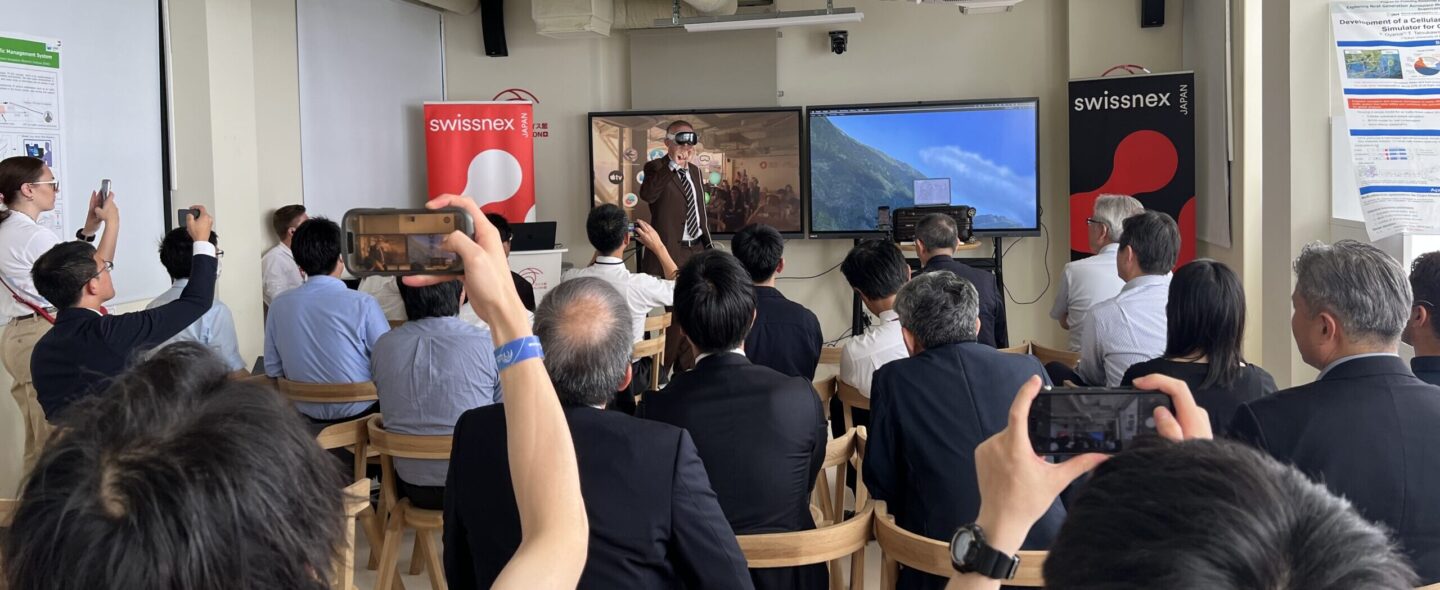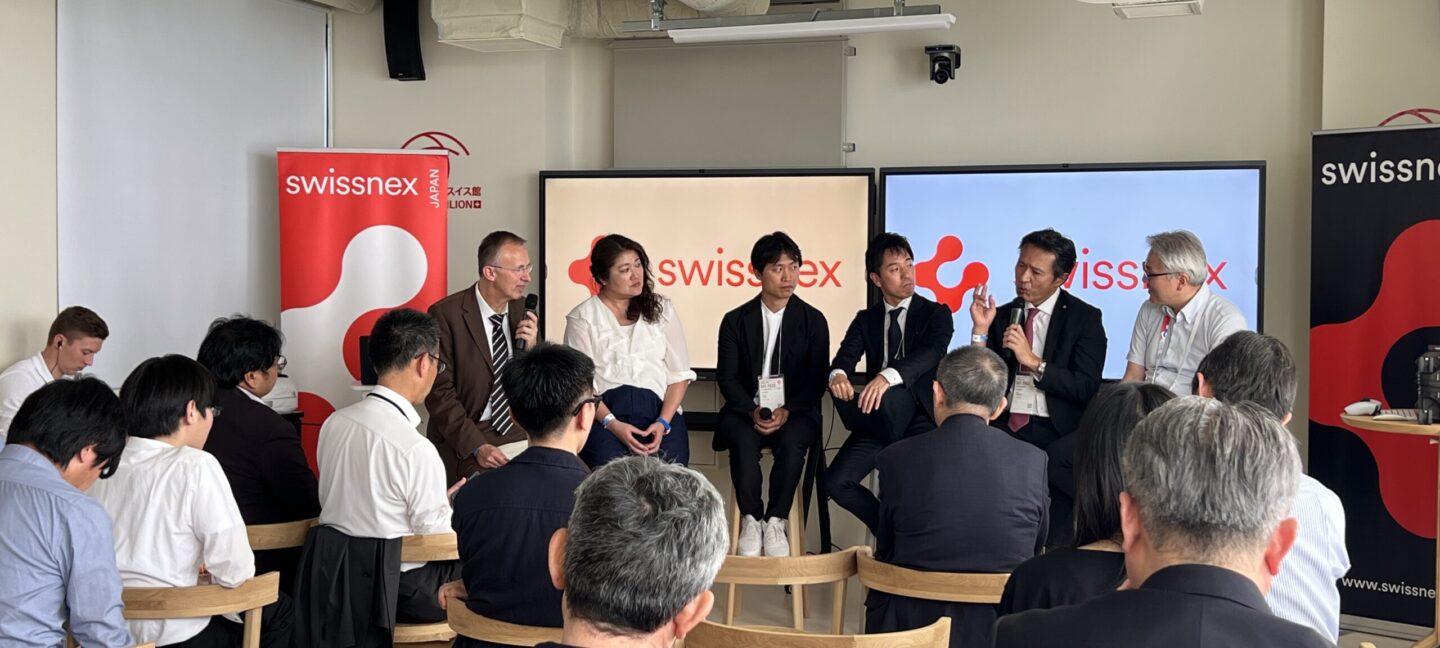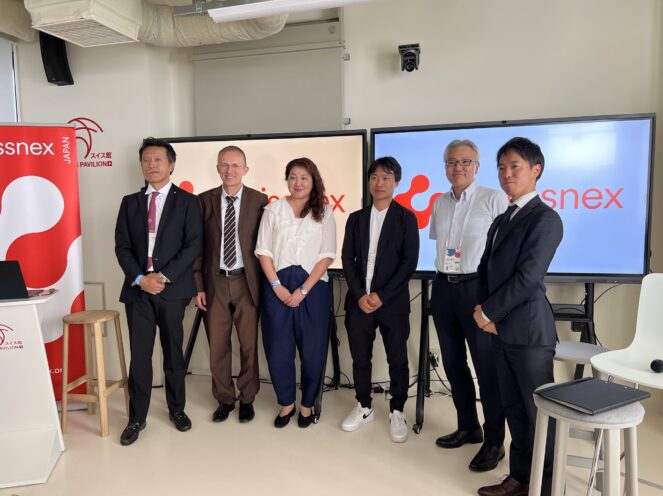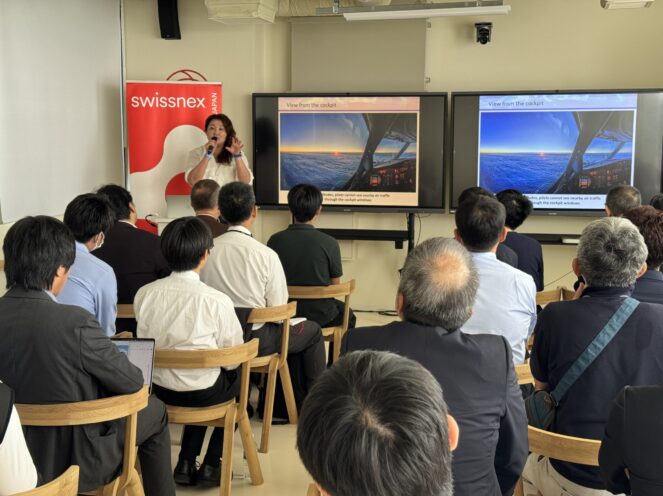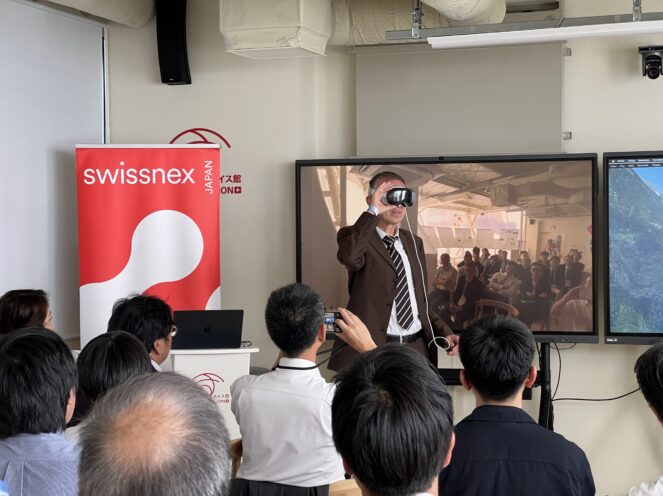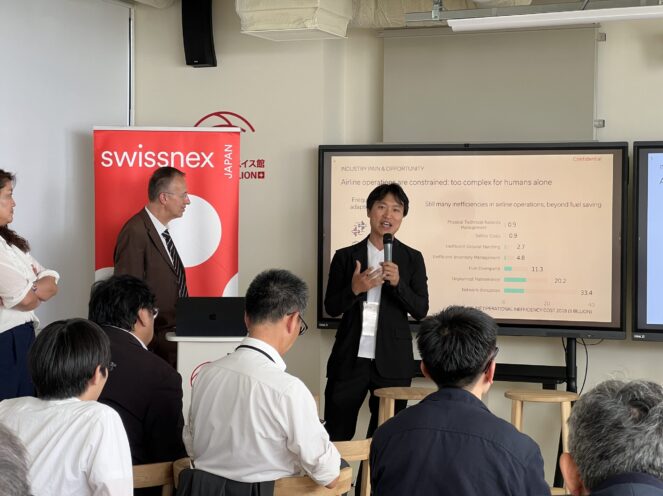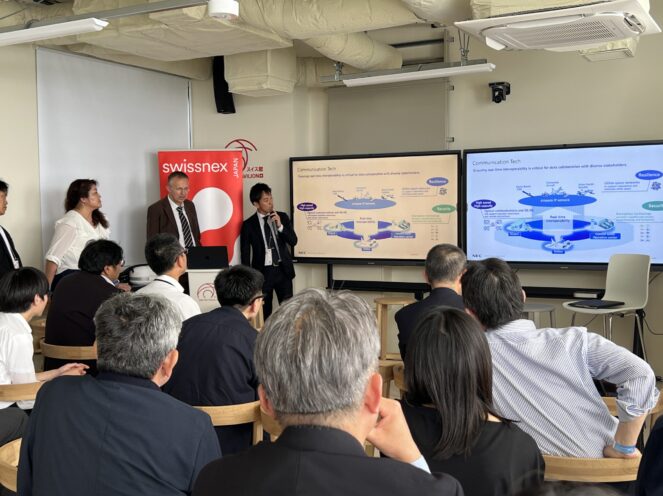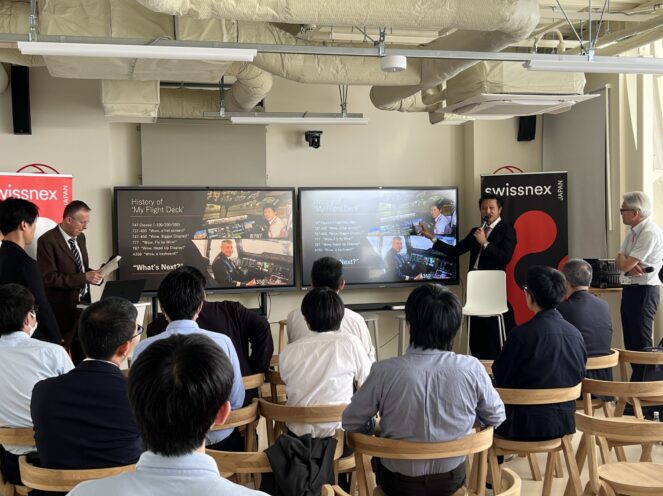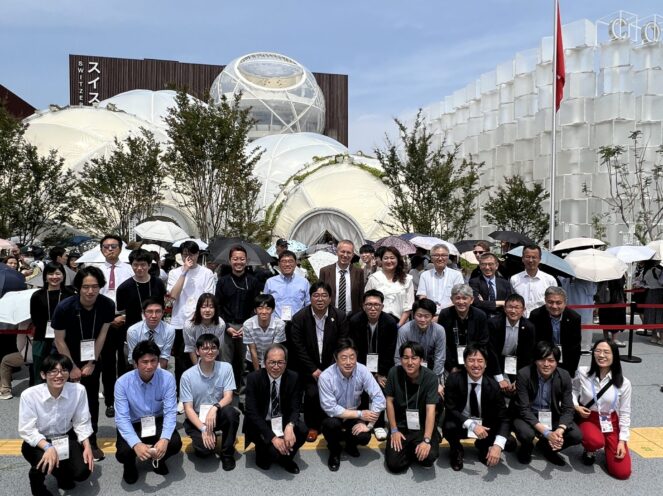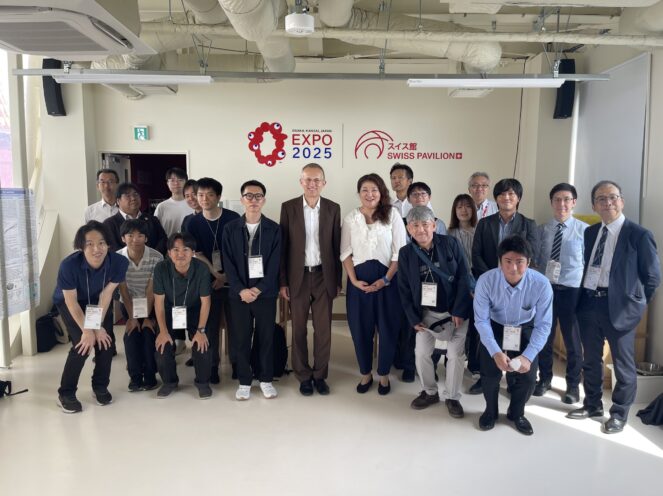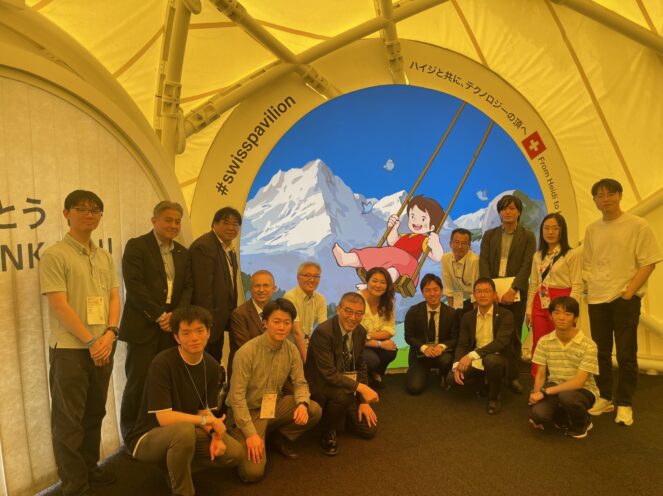Minami Kotani
The day opened with welcome remarks by Dr. Felix Moesner, Consul and CEO of Swissnex in Japan, setting the tone for a high-level exchange of ideas. From there, keynote speaker Prof. Eri Itoh of the University of Tokyo took the stage to share a compelling vision of future air traffic systems—one where human-AI collaboration ensures safety and efficiency in increasingly complex skies. Mr. Naoki Matayoshi of JAXA followed with a presentation on ReAMo – Realization of Advanced Air Mobility, introducing Japan’s roadmap for integrating next-generation aerial transport systems into daily life.
In the morning panel discussion, moderated by Prof. Itoh, experts tackled some of the most pressing challenges and opportunities in future air operations: managing air traffic across diverse altitudes, advancing sustainability in aviation, and designing intelligent interfaces that keep the human in the loop.
The afternoon panel, led by Prof. Peter Lenhart of the Zurich University of Applied Sciences (ZHAW), shifted the spotlight to avionics and cockpit innovation. Speakers from NEC, NABLA Mobility, JAL Aviofuture Lab, and other key players delved into the transformation of cockpit environments, pilot training, and system automation.
A standout moment was Prof. Lenhart’s keynote on future cockpit instrumentation, culminating in a live demo of the “Highway in the Sky” concept. Using Apple Vision Pro technology, the immersive flight simulator offered participants a futuristic, hands-on glimpse of aviation’s next frontier, captivating aviation professionals and general visitors alike.
Beyond the presentations and panels, the day fostered new connections through poster sessions and coffee break conversations. Representatives from academia, industry, and government mingled and explored potential collaborations, embodying the Swiss Pavilion’s mission of catalyzing international dialogue and innovation.
We thank all the speakers, panelists, and participants who contributed to this milestone event. As global airspaces become more dynamic, cross-border collaboration between nations like Japan and Switzerland is vital in ensuring a safe, efficient, and sustainable future of air traffic.
Between early April and early June 2025, as part of the “Future of Air Traffic” project, the visiting professor spent two months in Japan building bridges between academia, industry, and public institutions. A key highlight of his program was the symposium that brought together leading voices from academia, industry, and government, including the University of Tokyo, Tokyo University of Science, Tohoku University, and organizations such as Spaceport Oita Project, NEC, NABLA, ENRI, JAXA, and Japan Airlines’ Future Lab, among others. These engagements catalyzed discussions on the evolution of air traffic systems and emerging aerospace technologies.
Following the symposium, Professor Lenhart continued his engagement as a visiting researcher at the University of Tokyo’s Aerospace Mobility Lab, contributing to ongoing discussions on next-generation air transportation systems and fostering academic exchange.
In addition to these core activities, he also held targeted meetings with leading institutions such as JAXA, Keio University, and the Nara Institute of Science and Technology, through Swissnex in Japan support. These exchanges opened the door to new research connections and reinforced a shared commitment to reimagining the future of air mobility through international cooperation and innovation.






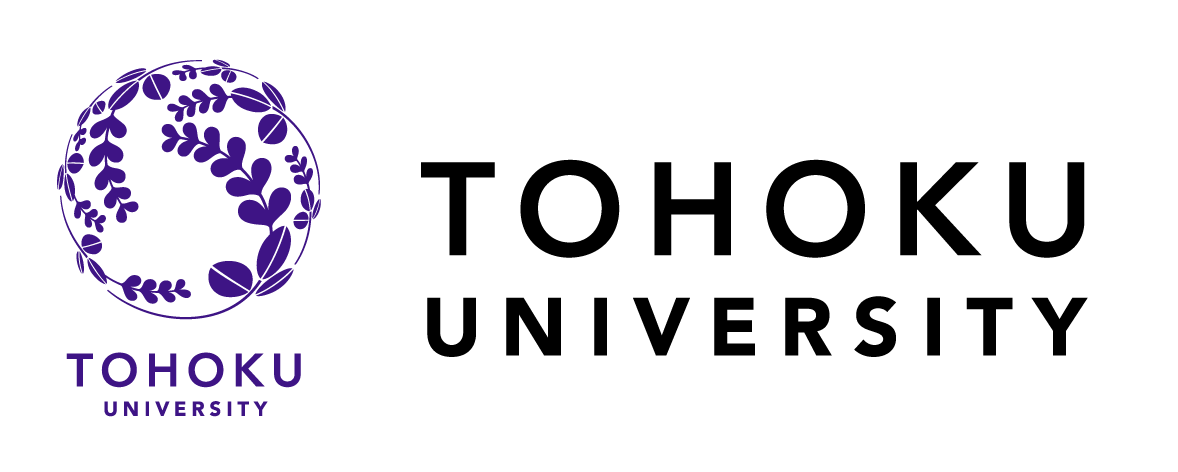

Minami Kotani
